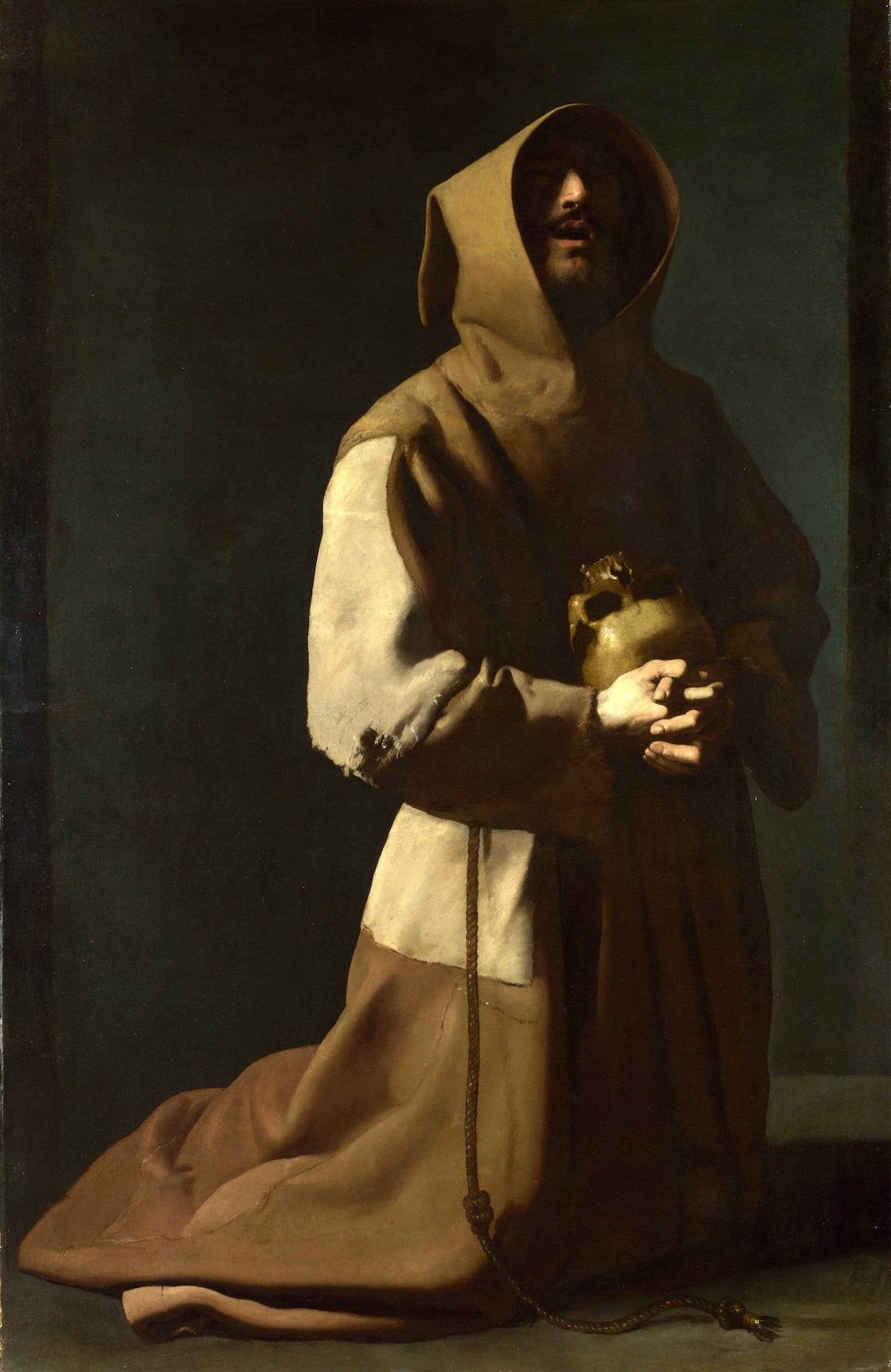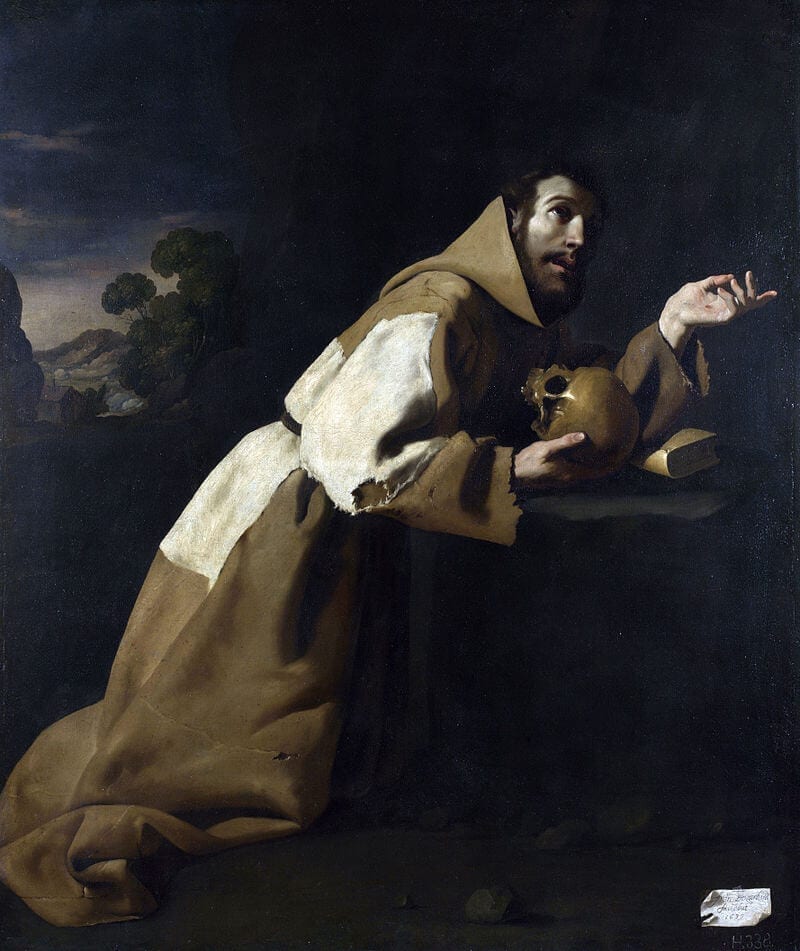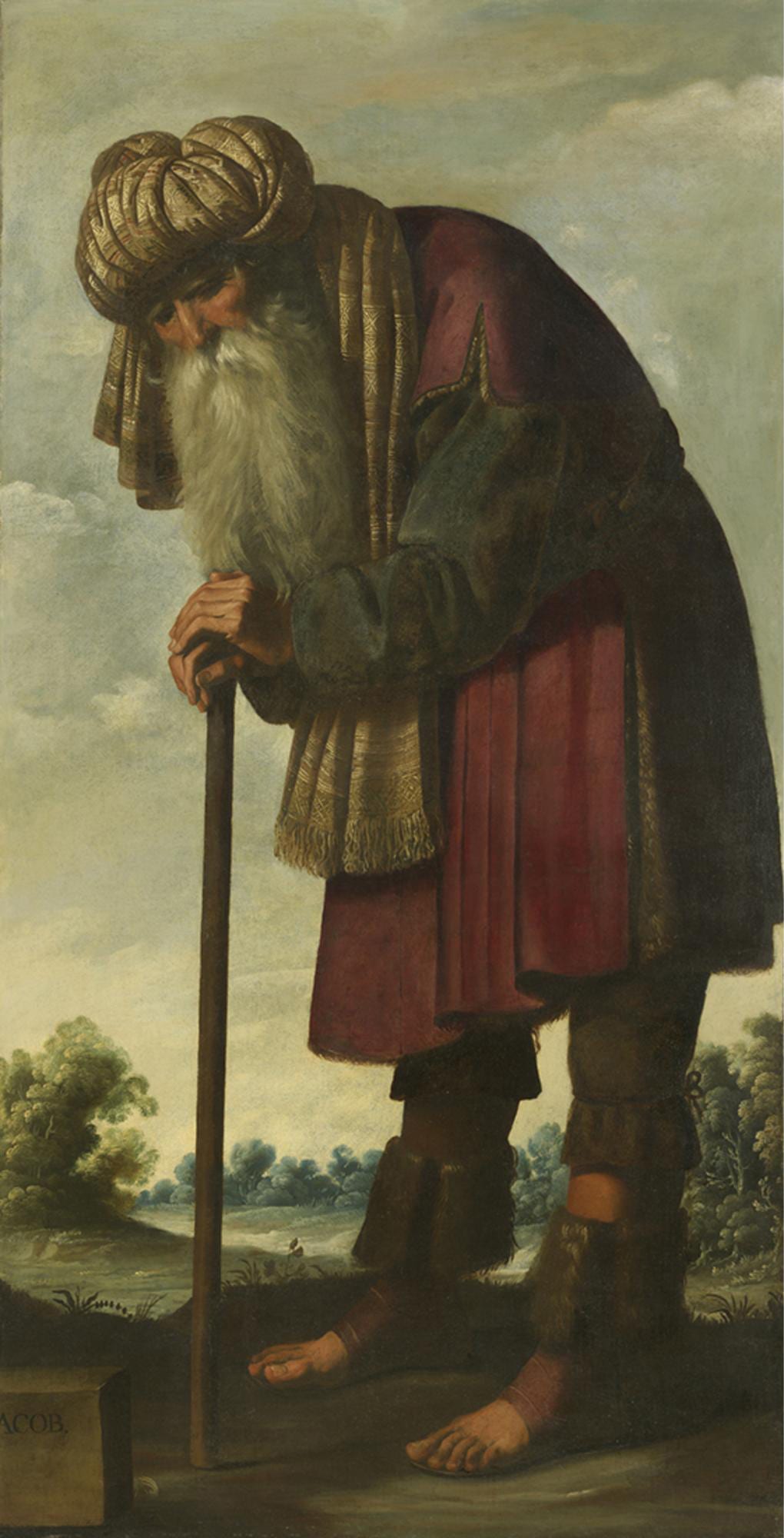Stephen Martin
Durham, England, United Kingdom

Francisco de Zurbarán (1598–1664) was painter to King Phillip IV of Spain and Portugal and a contemporary of Velázquez. He was the leading religious artist of the Spanish counter-reformation.1 A highly-skilled pioneer of the light-dark chiaroscuro technique, his prominent works include The flight into Egypt, several canvases of Saint Francis in contemplation, and the Jewish patriarchs in the series Jacob and his twelve sons. His art shows immense reverence to Judaic figures and is emblematic of religious tolerance. He was a pivotal artist of the Golden Age century of Seville art, the siglo de oro.2 One way Zurbarán achieved piety, authority, and respect in his more detailed, larger paintings, was through the use of convincing anatomical details laden with realism and meaning.
Saint Joseph
In Rest on the flight into Egypt, Zurbarán shows Joseph with red feet and bunions, marching relentlessly and focused entirely on the infant Christ. His left thumb is sore from stick friction. There is a vertical red line of demarcation in the feet and ankles suggesting devotion to the point of cellulitis. It could also be sunburn. Either way, the anatomical emblems give a clear message of self-sacrifice for the greater good. “Rest” is a misnomer here and is better reserved for Caravaggio’s cozy work on the same subject but showing true repose. Zurbarán’s image is one of driven devotion.
Saint Francis

1659. Francisco de Zurbarán. © The National Gallery, London
Two Zurbarán paintings in the National Gallery in London show St. Francis holding a skull, kneeling, and looking to heaven. In one he is hooded and holding the skull in two hands (Fig. 1), and in the other he kneels over a rock, skull in one hand, unhooded (Fig. 2). The saint is in the same ragged robe with the same much-handled, polished brown skull in both paintings. The skull has no mandible and only two canine teeth remain. Canine teeth last the longest in the sockets during life as well as after death, and symbolize a thin final connection to the life that was. The missing jaw is a departed voice, a departed soul. In St. Francis himself, the lean face and hands reflect monastic modesty and a life of prayer. His nostrils and mouth are open as sensory receptors of spirituality. He has osteoarthritic swollen thumbs in both paintings, telling of suffering and dedication over decades. Writing, not laboring, is implied from his thin hand muscles, a homage to relentless intellectual effort. Zurbarán wanted to convey the saint’s self-sacrifice and portrayed him as borderline undernourished. It is an image of Zurbarán’s choices, not, of course, a portrait of St. Francis.
The chiaroscuro brightness highlights this symbolic anatomy in both paintings. Religious allegory in the light and dark is clear, and together with anatomy is a driving force in the use of the chiaroscuro. Zurbarán, in another version, depicts St. Francis with only his old hands visible holding the bidentate skull and his face hooded in darkness. The Alte Pinakothek in Munich has a half-figure St. Francis which is less symbolic—intact robe, plain skull with no teeth, and no striking pathology in the figure. A hooded St. Francis in the Buenos Aires Museo Nacional de Bellos Artes has only faint nasal highlights, no hand pathology, and the same plain, edentulous skull. It appears that less work went into these two paintings, probably influenced by the usual factors of time, fees, and commission requirements from the Franciscan monasteries for whom he worked.3 There is evidence for higher levels of arts funding generating extra creativity in the Spanish counter-reformation. The symbolic, richer pictures show Zurbarán’s inclinations with a free hand. The recurrent, matching skulls seem to have been the artist’s personal studio props.
The Jewish Patriarchs

Zurbarán’s paintings of Jacob and his sons had a meaningful journey to England, representing interest by Church of England Bishop Trevor in 1756 in Old Testament images of the founders of the twelve tribes of Israel.4
Twelve of the thirteen originals in the series of the Jewish patriarchs are now in the ownership of The Auckland Castle Trust. Jacob himself (Fig. 3) is the most aged looking subject, stooped at forty-five degrees on a stout stick. All his carefully-depicted hand knuckles are swollen. His big toe joint in his right foot is swollen. The toenails have fungal erosion, a symbol of labor, not avoidance. His fingernails look spooned, a sign of iron deficiency, which Zurbarán could have viewed as mortal frailty; the artist would not have known about nail spooning as a sign of iron deficiency anemia. Jacob’s face is tanned but pale in the recesses of his eye sockets. The way Jacob uses both hands to support himself suggests guarding against pain from leaning on one hand alone. It is a deeply respectful image of a mature man facing the mortal-immortal transition, who has trekked far, soaked up strife, and long carried responsibility.
The sons Reuben, Asher, Zebulun, Levi, Dan, Joseph, and Simeon are all painted as strong, healthy, mature figures. Arguably, they are a majority cluster of power and effectiveness of the patriarchs, now healthy in the present. Issachar and Naphthali (or Naphtali) are particularly muscular in their single exposed calf and arm respectively. These fit with their effort symbols in the paintings; a pack and a spade respectively. Issachar migrated into Egypt—his leg muscle shows that and may emblematize his descendants’ later return march under Moses. Naphthali’s arm and spade are building the future.
Gad is another arthritic subject with swollen hand knuckles and an overriding left fourth toe, but he is also a generally strong, fit-looking figure. This looks to be symbolic of Jacob’s prophesy that Gad would be attacked and retaliate: “Gad, a troop shall tramp upon him, but he shall triumph at last.”5
Judah is bearded, upright, well-built, and shown with swollen hand and foot joints. With his strong maturity is the painful wear and tear of moral assertive action against the group, in saving Joseph6 and protecting Benjamin.7
Zurbarán, naturally for the time, avoided anything of the Old Testament’s several sexual anecdotes of the patriarchs and instead homed in on steadfastness, resilience, and lasting fatherly achievement. There is much scholarly work on the patriarchs’ lives, but the paintings are consistent with what Zurbarán and his patrons would have been exposed to in his contemporaneous Bible.
The dynamics of anatomy and pathology
There are two particularly beckoning mysteries surrounding Zurbarán. One is whether he knew of the account of St. Francis going to Spain and reconciling with Islam, such that they were custodians of the Holy Land.8 If so, it substantiates Zurbarán’s religious tolerance and adds extra symbolism to St. Francis as a subject. Second, it is not known if any direct line of influence links Caravaggio to Zurbarán, including whether or not he had the opportunity to study Caravaggio’s work.9 The passion in Zurbarán’s anatomy, its symbolic depth of tolerant meaning, and his chiaroscuro skill all suggest that the answers to both questions might be yes.
Recent scholarly attention to the dynamics around Zurbarán has highlighted the demands of doctrine, the requirements of patrons, and a public for whom the story, not the style, was the essence of a work of art.10 Zurbarán did not make all of his old religious figures arthritic. Interestingly, his female saints are all iconic and healthy, even in the detailed, more costly paintings. He sticks to images of eternal purity and all the implication of incorruptibility. In what is arguably his greatest masterpiece, the Apotheosis of St. Thomas Aquinas, now in Seville’s Museum of Fine Arts, Zurbarán uses mysticism. He avoids symbolic anatomy and pathology other than portraits of distinguished maturity. This substantiates a selective and themed symbolism in the pictures we have considered. He chose what to use or omit from options in pathology in each figure. This artistic freedom allowed him to add his personal intellect to monastic patrons’ doctrine and story-telling. His artistic choices tell much about his knowledge of human form and what it meant. On one level Zurbarán painted men’s hands and feet very well. On another level, anatomy played a strong symbolic role in his homage to St. Joseph, St. Francis, and the Jewish patriarchs. Remarkably, painful pathology by Zurbarán uses the same symbols and places different faiths on an equal footing.
Image credits
Figure 1. Saint Francis in Meditation. 1650’s. Francisco de Zurbarán. Oil on canvas. 152 x 99 cm. Under lasting, fee-paid license to Hektoen International for online publication from 2018, courtesy of, and © The National Gallery, London.
Figure 2. Saint Francis in Meditation. 1659. Francisco de Zurbarán. Oil on canvas. 162 x 137 cm. Wedgwood bequest. Under lasting, fee-paid license, to Hektoen International for online publication from 2018 courtesy of, and © The National Gallery, London.
Figure 3. Jacob. 1640–1645. Francisco de Zurbarán. Oil on canvas. 201 x 102.4 cm. The Auckland Project. Public domain via Wikimedia Commons.
References
- Bagan R. Zurbarán. Susaeta, Madrid, 2004.
- Delenda O, Borobia M, Ros A, Noceda Fernandez J M, Valdivieso E, Navarrete, B. Zurbarán: A New Perspective. Fundacion Coleccion ABC, Madrid, 2015.
- Brown J. Zurbarán. Harry N Abrams inc., New York, 1991.
- Galassi S G, Payne E & Roglán M A. Zurbarán: Jacob and His Twelve Sons, Paintings from Auckland Castle, Lucia Marquand/Meadows Museum and Centro de Estudios Europa Hispánica, Dallas, 2017.
- Genesis 49:19
- Genesis 37:26–27
- Genesis 44:22
- Discussed in exhibition: ‘Santas de Zurbarán: Devoción y Persuasión’, Instituto de la Cultura y las Artes, Seville, 2013.
- Alcolea S. Zurbarán. Ediciones Poligrafa, Barcelona, 2008.
- Baticle J; with Bottineau Y, Brown J, Perez Sanchez A E. Zurbarán. The Metropolitan Museum of Art, New York/Distributed by Yale University Press, 2013.
STEPHEN MARTIN, MBBS, MRCPsych, LTCL, is a retired neuropsychiatrist and recently did a sabbatical as professor in the faculty of arts at the University of Mahasarakham. He is interested in symbols of tolerance and inclusivity in art and music.
Highlighted in Frontispiece Volume 11, Issue 2– Spring 2019

Leave a Reply